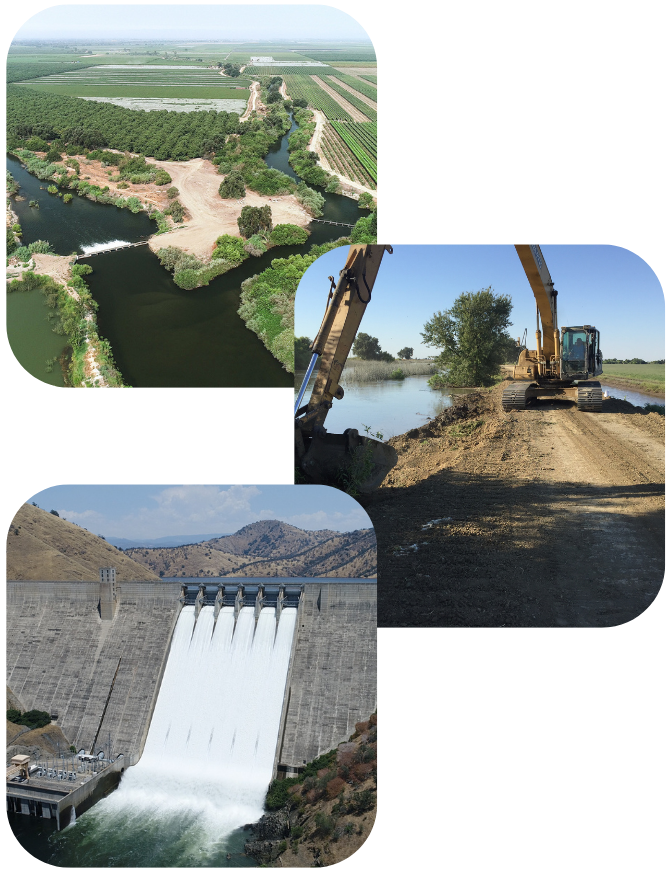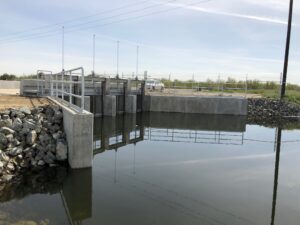During the 2022/2023 Water Year, the Kings River experienced the most snowmelt runoff ever recorded: over 4,500,000 acre-feet. About 80 percent of the Kings River’s runoff occurs in April, May, June, and July. Before Pine Flat Dam became a reality, flooding was frequent enough to be considered a severe and continuous problem along the Kings River. The federal Flood Control Act of 1944, which authorized Pine Flat Dam’s construction, also provided for downstream channel improvements. Those projects included enlargement and renovation of levees and channels so Pine Flat flood releases and uncontrolled stream flows from Mill and Hughes creeks could safely pass to the San Joaquin River or, in extreme cases, to the Tulare Lake Basin. Over the years, these projects and other activities have helped improve KRCD’s flood control efforts.
In recent years, KRCD has secured millions in grant funding from the state. That funding included Prop 68’s Riparian Restoration Grant to remove invasive species, trash, and sediment improving the health of the river and help the Kings River’s channels and levees prepare for future flood seasons.


